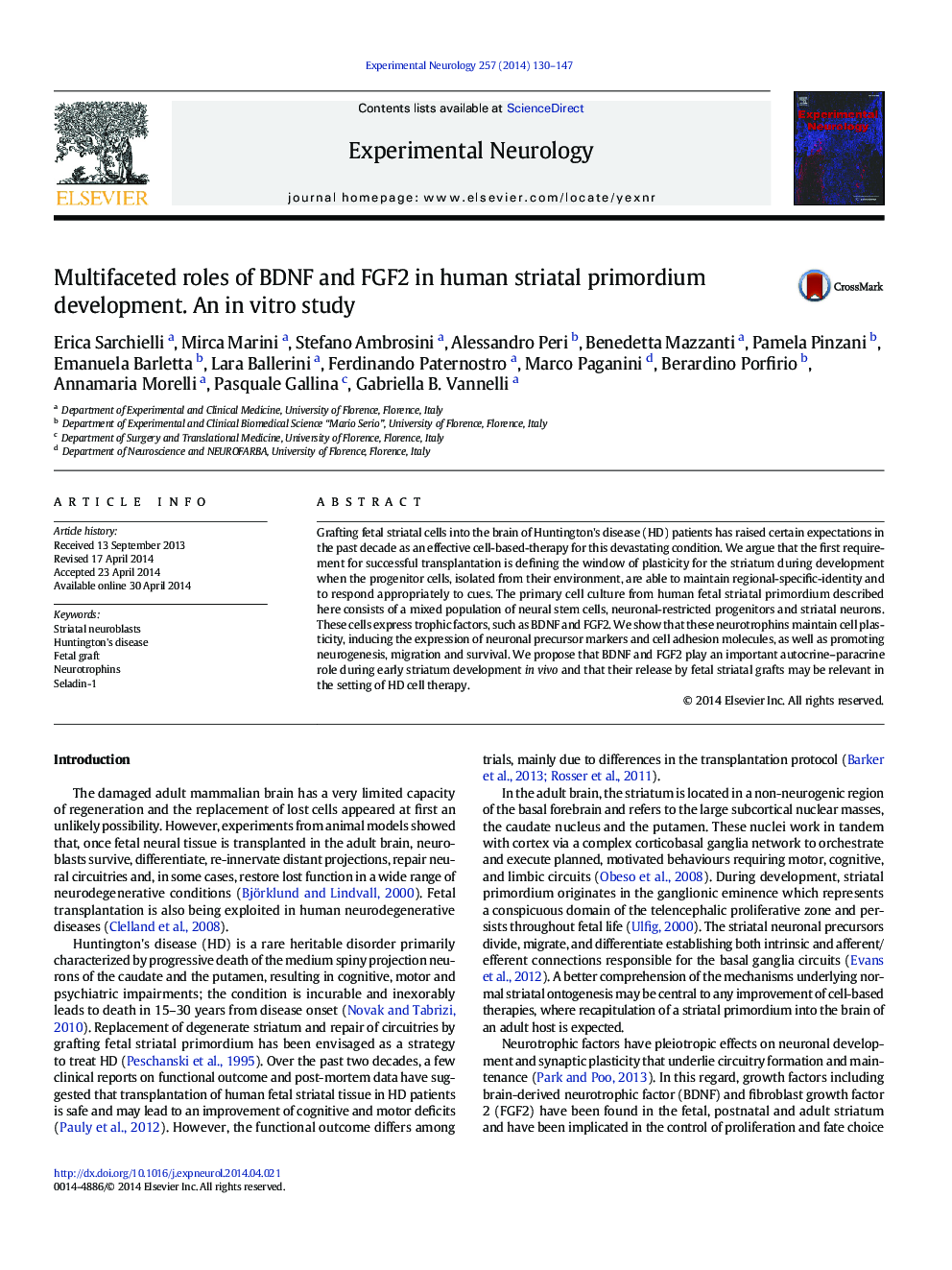| کد مقاله | کد نشریه | سال انتشار | مقاله انگلیسی | نسخه تمام متن |
|---|---|---|---|---|
| 3055515 | 1580175 | 2014 | 18 صفحه PDF | دانلود رایگان |

• Human striatal precursor (HSP) cells have both immature and striatal features
• HSP cells express and release BDNF and FGF2
• BDNF and FGF2 induce HSP cell growth and migration and cell-to-cell communication
• Seladin-1 mediates the BDNF- and FGF2-induced HSP cell survival
Grafting fetal striatal cells into the brain of Huntington's disease (HD) patients has raised certain expectations in the past decade as an effective cell-based-therapy for this devastating condition. We argue that the first requirement for successful transplantation is defining the window of plasticity for the striatum during development when the progenitor cells, isolated from their environment, are able to maintain regional-specific-identity and to respond appropriately to cues. The primary cell culture from human fetal striatal primordium described here consists of a mixed population of neural stem cells, neuronal-restricted progenitors and striatal neurons. These cells express trophic factors, such as BDNF and FGF2. We show that these neurotrophins maintain cell plasticity, inducing the expression of neuronal precursor markers and cell adhesion molecules, as well as promoting neurogenesis, migration and survival. We propose that BDNF and FGF2 play an important autocrine–paracrine role during early striatum development in vivo and that their release by fetal striatal grafts may be relevant in the setting of HD cell therapy.
Journal: Experimental Neurology - Volume 257, July 2014, Pages 130–147